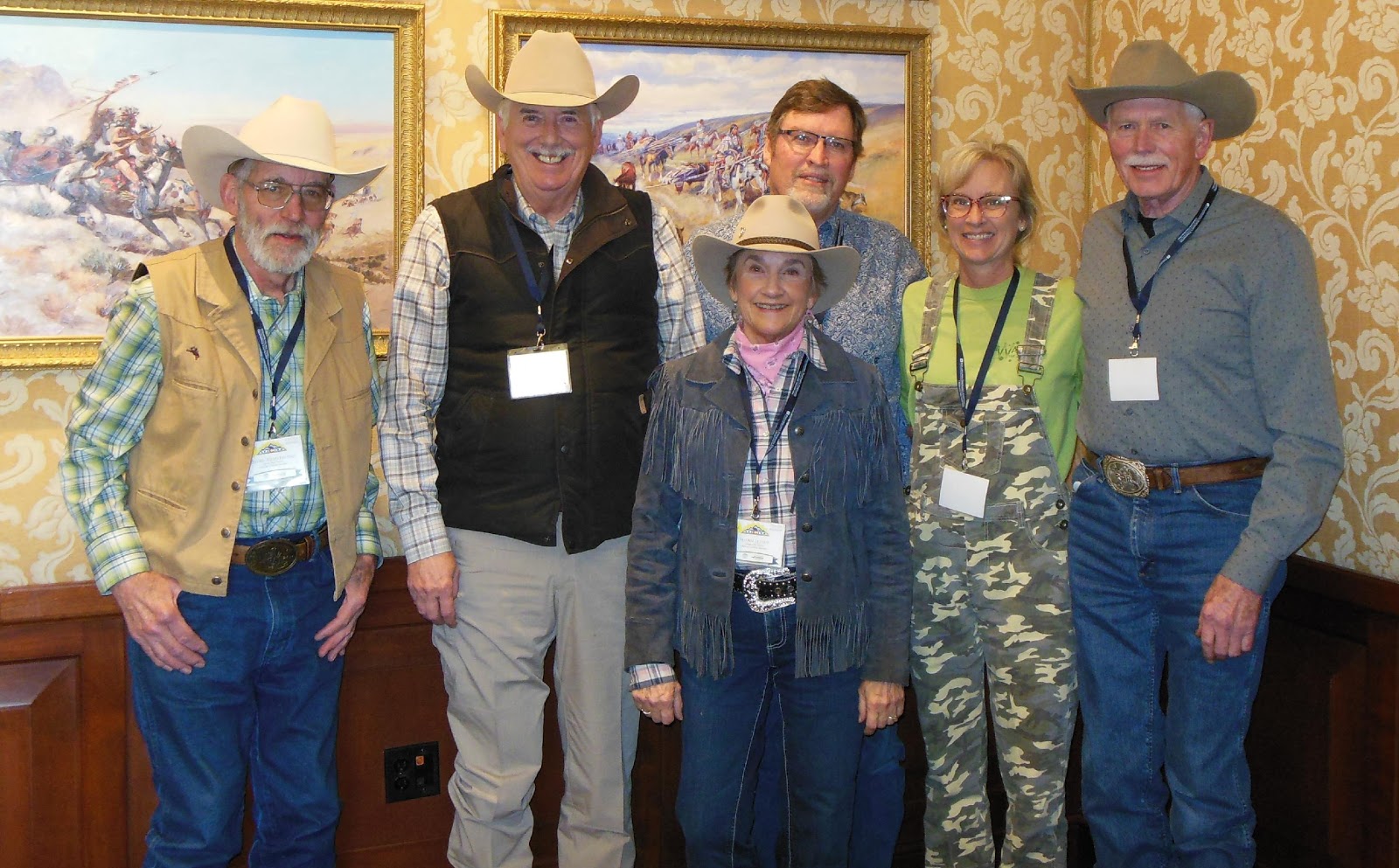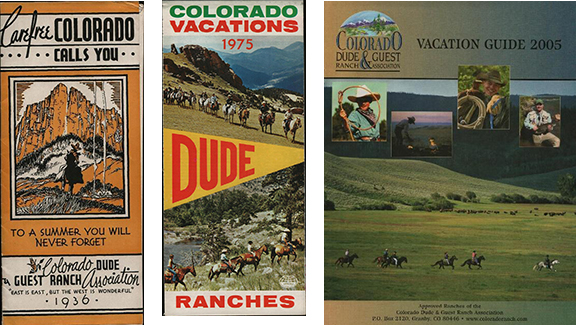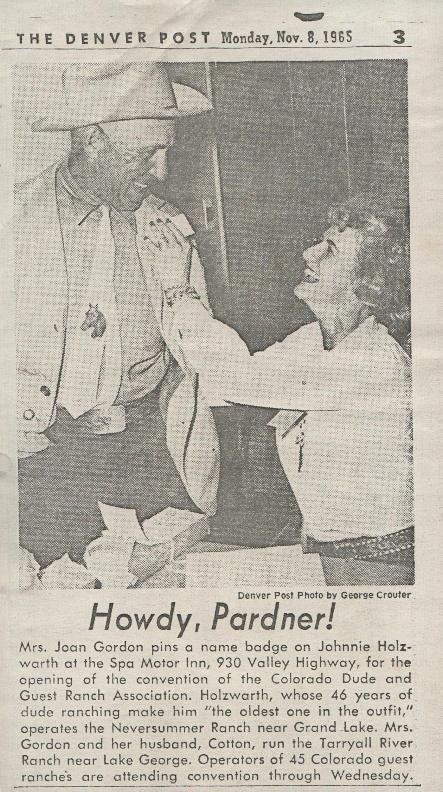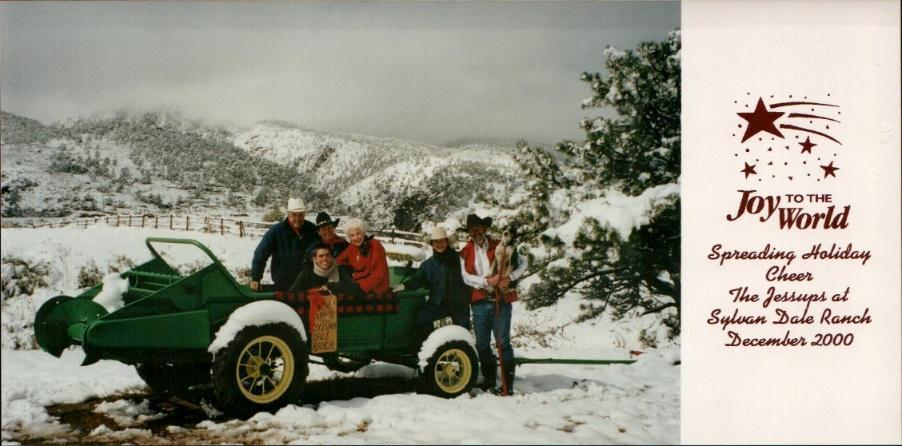Story
Stories of Colorado Dude and Guest Ranches
History Colorado recently acquired the historical archive of the Colorado Dude and Guest Ranch Association (CDGRA) dating from 1933 through 2018. Formed in 1933, the association is a membership organization serving as a vital marketing resource, and, more importantly, as a system of self-regulation ensuring that Colorado dude and guest ranches are held to high standards.
You might wonder, “Is there a difference between a dude ranch and guest ranch?” While both dude and guest ranches offer experiences related to ranching in the American West, for the Colorado Dude and Guest Ranch Association there is a distinction between the two. Dude ranches are typically working ranches, while guest ranches are not engaged in the cattle business.
In the early days, the CDGRA produced advertising brochures and utilized print media to spread the word about Colorado dude and guest ranches. This marketing eventually evolved into an online portal reaching a worldwide audience. The association’s first brochure published in 1936 listed 11 ranches; the number has grown to 24 in 2019.
Junelle Pringle, from the Waunita Hot Springs Ranch, served as the association’s historian for approximately 40 years until recently retiring. Over the years, the association has maintained a list of all current and former members and compiled an extensive archive of documentary materials. A comprehensive list of all ranches, as well as a 237-page history of the association are included in the collection donated by the CDGRA. Brochures published by the association, minutes of board meetings, photographs and films in various formats, histories of each ranch that is or was a member of the association, various newspaper clippings and cookbooks, and inspection reports on each ranch in the association comprise the rest of the collection. (History Colorado is currently working to organize this collection for public access. All items imaged here are part of the manuscript collection MSS.3118.)
Correlating to the physical histories of the CDGRA, History Colorado conducted oral history interviews with several members of the association at their annual meeting held at the Broadmoor Hotel in Colorado Springs on March 1, 2019. Participants representing four ranches in the association included Dave Armstrong, Susan Jessup, Robert L. Foster, Ryan Pringle, Tammy Pringle, and Doug Van Berkum. In addition to short interviews detailing each ranch, an oral history with the entire group captures the overall history of the association including economic and cultural impacts to Colorado, unique aspects of dude and guest ranches in Colorado, and each rancher’s personal affiliations to the CDGRA (2019.21.1). Individual oral histories feature the history of the specific ranches including how each interviewee became associated with dude and guest ranching plus a few favorite stories about each ranch.

The following narratives about a few of the ranches in CGRA demonstrates the variety of dude and guest ranches throughout Colorado.
The Lost Valley Ranch – Owner Robert L. Foster – Working Guest Ranch near Sedalia (2019.21.2)
Originally established as small working cattle ranch in 1878 by George Tarbell, as early as 1900 the Lost Valley Ranch was being transitioned into a guest ranch. Scottish immigrant Jim Graham and his wife Rhoda purchased the ranch in the early 1890s and added 160 acre parcels. As a means of supplementing the cattle business, the couple began hosting guests during the summers. In 1934, following the death of her husband, Rhoda sold the ranch to Hugh Graham (no relation), who built five new cabins and began advertising “Graham’s Lost Valley Ranch” as a family destination for fishing and riding.
In 1961, Bob and Marion Foster acquired the ranch and soon transformed it into a one-of-a-kind guest ranch experience. The Foster family relocated from California in 1956 as Bob was offered employment in Colorado Springs. The couple decided to pursue their aspirations of running a dude ranch after a few years in Colorado. Truly a family endeavor, Bob Jr. explained that his “Dad was the face of the ranch, mom was the hands and feet.” Bob Jr. continued the family business while holding fast to its roots as a working cattle ranch.
Hosting many families from all parts of the world, celebrities have also vacationed at the Lost Valley. Most notably, Walt Disney chose the ranch as the location for his family vacation in the 1960s. In June of 2002, the Lost Valley Ranch was changed forever when it was caught in the path of the Hayman fire. It burned until July 19, consuming over 138,000 acres and 133 homes in the state. Fortunately, most of the structures were saved and—while all the cattle were tragically lost— the ranch survived the disaster. Bob Jr. describes the fire as having a “profound impact,” exposing previously hidden rock formations that transformed forests into rolling hills and rocks. A silver lining to the fire was the new growth of grass for grazing that has led to increased numbers of elk in the area and cattle production. Today, Tony and Brooke Warnock and their family are continuing the Fosters’ legacy.
Rainbow Trout Ranch – Owner, Doug Van Berkum – Guest Ranch near Antonito (2019.21.3)
Located in the middle of the San Juan Mountains in the Rio Grande River Valley and South San Juan Wilderness, the Rainbow Trout Ranch has always functioned as a guest ranch. Known as a “fisherman’s paradise,” it began as small retreat with only cabins until a lodge was constructed in the mid-1920s. One of the earliest draws to the ranch was a bathhouse with hot water. There was no electricity until the early 1960s despite some novel attempts at generating electricity with a creek-run turbine and, later, a diesel generator. Due to the remote canyon location, the ranch had the only working telephone for miles around, often utilized by locals needing to make a phone call.
Today, the ranch offers its guests a range of cowboy activities including horseback riding, fishing, and country and western dancing. Doug even spends time teaching younger guests the “Cowboy Code.” In addition to the running of the guest ranch, David raises quarter horses and teaches guests the rodeo sport of team roping. The Rainbow Trout Ranch is a family enterprise and, for the owners, “dude ranching is personal.”
Waunita Hot Springs Ranch – Owners Ryan and Tammy Pringle – Guest Ranch near Gunnison (2019.21.4) Located 10 miles west of the Continental Divide, the Waunita Hot Springs Ranch is surrounded by the Gunnison National Forest in eastern Gunnison County. The Waunita Hot Springs were used for centuries by Native Americans before the ranch was homesteaded in the late 1880s. At the turn of the twentieth century, Dr. Charles Davis from Chicago created a haven for his patients to spend their summers bathing in the healing waters. The original lodge was built in 1910 and subsequently rebuilt in 1915 after a fire. The 1915 brick lodge is still in use today. Ownership changed hands a number of times during and following the Great Depression until the 1950s when it was converted into a summer baseball camp.
After spending just one night in Colorado in December 1961, the Pringle family purchased the property with the initial plan to reinvigorate the baseball camp. Rodrick Pringle had previously been the director of a Houston YMCA and couldn’t pass up the opportunity to run his own camp in Colorado. Over the years it eventually turned into a family destination guest ranch. In the 1980s and ‘90s, Waunita Hot Springs Ranch expanded its recreational offerings. Unlike many other guest ranches, it was never a working cattle outfit.
Ryan and his wife Tammy are continuing the family business. They are most proud of the comradery and relationships that develop between visitors and that in 57 years of having a “no key” policy for the accommodations they have never had one incident on the ranch. Ryan’s mother, Junelle, also served as the historian for the Colorado Dude and Guest Ranch association for decades.
Sylvan Dale Ranch – Owner Susan Jessup – Guest Ranch near Loveland (2019.21.5) Located in the Big Thompson River Valley, the Sylvan Dale Ranch is operated by second-generation rancher Susan Jessup. In the early 1900s, Mr. and Mrs. Frend Neville started a cattle ranch in the area and eventually built cabins and a lodge wishing to share the experience with their families. The Nevilles sold the ranch to Cotner College, a Christian Church school in Nebraska. When Cotner College closed in the 1930s, Sylvan Dale was leased out as a youth camp. In 1934, college student Maurice Jessup took a summer job working at the ranch, fell in love with the place, and proclaimed to the camp director, “Someday I’m going to own Sylvan Dale.”
Maurice moved to Colorado pursuing a career in education and met his wife, all the while hoping the opportunity to purchase Sylvan Dale would emerge. Twelve years after his declaration and nearing the end of World War II, Maurice received letter that the ranch was for sale while serving as a Lieutenant in the Army Air Corps. As luck would have it, he placed the winning bid: $12,502 for 125 acres.
Over the years, the Jessups increased the 125-acre ranch to a 3,200-acre working guest ranch. There were several setbacks along the way including the Big Thompson flood of 1976 and another in 2013. Following the flood in 1976, Susan took on more responsibility at the ranch in lieu of pursuing a teaching career and currently oversees all operations. There will not be a third generation of Jessups running Sylvan Dale: Susan established the educational non-profit Heart J Center for Experiential Learning to be the successor organization merging Maurice and Mayme’s passions for the ranch and education.
Interested in listening to the oral history interviews described here? They can all be found here.



